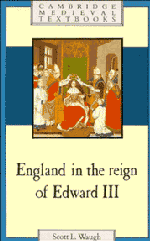Book contents
- Frontmatter
- Contents
- List of figures and tables
- Acknowledgements
- Map 1 Towns and villages mentioned in Chapters 3–6
- Map 2 Ecclesiastical sites mentioned in Chapter 9
- Part I Overview
- Part II Economic challenges
- Part III Government and communities
- 8 Nobility and gentry
- 9 The church and clergy
- 10 Law and order in local communities
- 11 Administration and finance
- Part IV Politics
- Glossary
- Bibliography
- Index
10 - Law and order in local communities
Published online by Cambridge University Press: 05 June 2012
- Frontmatter
- Contents
- List of figures and tables
- Acknowledgements
- Map 1 Towns and villages mentioned in Chapters 3–6
- Map 2 Ecclesiastical sites mentioned in Chapter 9
- Part I Overview
- Part II Economic challenges
- Part III Government and communities
- 8 Nobility and gentry
- 9 The church and clergy
- 10 Law and order in local communities
- 11 Administration and finance
- Part IV Politics
- Glossary
- Bibliography
- Index
Summary
Secular government faced the same problem as the church: how to get its subjects to live by its rules. Royal administration was hierarchically organized, from the village to the king, with sophisticated systems of accounting, adjudication, and communication. But for all its expertise, it had trouble collecting taxes and raising troops, catching criminals and executing judgements, and even getting its officials to perform their duties properly and impartially. The crown, moreover, did not have a monopoly on governing institutions at the local level. Ordinary individuals found themselves in overlapping, sometimes complementary, sometimes competing jurisdictions. The crown was only one authority in their lives; landlords, church, and community likewise commanded respect.
Four trends are discernible in fourteenth-century local government. One was the increasing activity of royal administrators because of war, crime, and a proliferation of legislation. A second trend was an effort by local elites to exert even greater control over local government than they already had, by determining appointments and the terms and duties of office-holding. More than ever before, to govern effectively the crown had to work through influential leaders, notably at the county level. Tout pointed out that the crown had a central bureaucracy but not a local one. It deputized elites in villages, towns, and counties to look after its interests and enforce its laws and commands. Since these agents were recruited from the very communities which they governed, they maintained a double allegiance that sometimes compromised their effectiveness.
- Type
- Chapter
- Information
- England in the Reign of Edward III , pp. 153 - 169Publisher: Cambridge University PressPrint publication year: 1991

